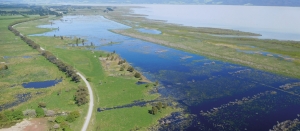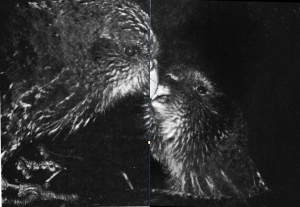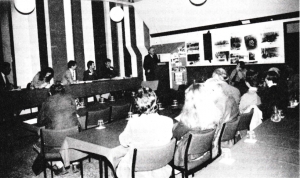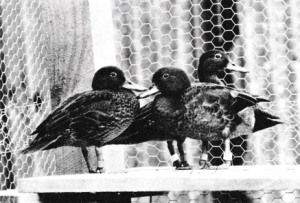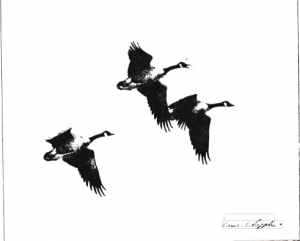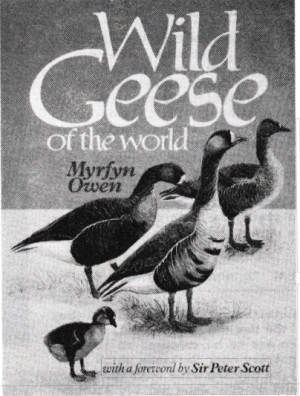Super User
Ramsar status for Wairio
Wairarapa Moana, which includes the Wairio wetland, has been recognised as a wetland of international importance under the Ramsar Wetland Convention.
Wairio has been Ducks Unlimited’s most significant, and its most rewarding, project over the past 15 years.
Conservation Minister Eugenie Sage, in announcing Ramsar’s decision at a ceremony at Lake Onoke on August 21, congratulated all the partners involved, including Ducks Unlimited.
From the President
Hi everyone. Last month we got the exciting news that Wairarapa Moana has been granted Ramsar status as a wetland of international importance, joining six other wetlands in New Zealand.
I hope this will mean repair work on the Matthews Lagoon reticulation project at Wairio will be completed sooner rather than later.
Our conference was held in Gisborne this year and it was most enjoyable. Everything ran very smoothly and according to plan. Timing of all the events was spot on.
We were extremely privileged to be able to visit to Nick's Head Station, which we all thoroughly enjoyed.
Next year's conference will be in Wellington, with a trip to Zealandia on the agenda.
Our congratulations to Isaac Conservation and Wildlife Trust's Anne Richardson, who was made an Officer of the New Zealand Order of Merit in June.
Explore the Wairarapa Moana
Nationally Recognised restoration efforts
According to WaiWetlands, you should prepare to be inspired by nationally recognised restoration efforts at Wairio by community group Ducks Unlimited.
Once a paradise for waterfowl and aquatic species, the wetlands were greatly affected by drainage schemes in the twentieth century. Today they are a living example of what is possible through wetland restoration efforts.
Go to the Wairarapa Moana Wetlands website and read the whole story
Report on Operation Whio (Blue Duck)
Mr David McNeil opened his remarks commenting that the decision by the Wildlife Service to capture and supply Ducks Unlimited with 10 pairs of birds was received with great enthusiasm as DU had long considered that the development of expertise with this species (before numbers in the wild are affected by habitat reduction and other causes to a dangerously low level)was a logical move.
Mr McNeil outlined background to the project and gave details of experience achieved in adapting the birds to new diet and conditions during acclimatisation. Praise was given to Mr and Mrs I.H. Pirani and Mr M. Powell for their efforts in rearing the birds under aviary conditions — he said it would be difficult to imagine a greater change from conditions in the wild but commented that those involved with rearing had been astonished at the birds' natural quietness and lack of concern when approached closely — perhaps a fatal flaw in their nature. Pair bonding was discussed and experiences with natural pairing shared with the audience.
Overall it was felt that a great deal of progress had been made and Mr McNeil said he hoped the Wildlife Service could catch the balance of their agreed total as a permanent nucleus of captured birds was essential to the survival of the species. The Wildlife Service was being kept fully informed of Ducks Unlimited‘s progress. The only disturbing factor had been the recent reports of poaching of Blue Duck and other wildlife species for overseas markets, and Mr McNeil said Ducks Unlimited would assist with publicity and conservation of this unique species. A member requested that a remit be presented by Ducks Unlimited to the Minister of the Environment inquiring if anything had been done concerning alleged poaching recently reported in the press.
The President reported that he understood a special task force had been set up by the wildlife Service to investigate the matter of poaching Blue Duck and other species and undertook that a letter would be written to the Minister expressing the organisation's concern and seeking clarification of the position.
Report on Operation Branta (Canada Geese)
Mr F.N. Hayes re—stated DU's objective to permanently establish the Canada goose in the North _ Island, which is being achieved by transferring geese from the South Island and releasing them in a pinioned state on to suitable dams and lagoons. He outlined the history of the project, since 1977, concerning geese supplied from the South Island and also those bred by North Island DU members and zoological societies and supplied to the project. The majority of geese have been distributed to farmers in the Wairarapa in groups of 6—8 birds per lagoon. The Wellington Acclimatisation Society Senior Field Officer has been largely responsible for distribution of geese in the Wairarapa district and DU's appreciation was extended to Mr Ian Buchanan and to the Society for its co-Operation. Thanks were also expressed to the North Canterbury Acclimatisation Society. Mr P.M. McLeod received special thanks for his part in arranging shipments of geese to the North Island since 1977 - also Mr L. Piper of the North Canterbury Society's game farm for his outstanding assistance.
The establishment of the species in the North Island was progressing well and apart from the good breeding results in the Wairarapa, very healthy populations were being established in the Bay of Plenty where approximately 200 birds exist, and in Hawkes Bay where there is about the same number.
These populations have grown from wildlife Service releases in the l960/70s.
Concern was expressed at recent moves in the South Island to return the Canada goose to a non-protected status there. Canada geese are partially protected at present and DU considered a change in this status (achieved only last year) would ultimately lead to the species' annihilation in the South Island. Comments were made from the chair and the floor that the Canada goose in New Zealand has been and possibly still is one of the most maligned and abused forms of wildlife. A decision had to be made whether to manage the goose constructively or destructively while, at the same time, acknowledging all viewpoints commented Mr Hayes.
These remarks were followed by comments from members on the need to keep in perspective the whole question of Canada Geese in New Zealand and the President confirmed that Ducks Unlimited would be closely monitoring the situation.
History made on Stewart Island
For the first time in living memory, men watched while the Kakapo population increased by two. The wildlife team on the island described the find as ‘mind boggling‘.
The N.Z. Wildlife Service team have good reason to pat themselves on the back. Since 1977. when they discovered a community of thirty of the rare birds on Stewart Island. they‘ve been working hard to preserve the species.
The discovery of the two chicks was an indication of how important the team‘s work in eradicating pests. tagging and studying the birds has been.
The Kakapo needs your help too.
The wildlife team. whose good work became so evident recently. need somewhere to live while they study and protect the Kakapo. The World Wildlife Fund has set the Project Kakapo target at $25,000 to build and equip a hut with basic living and research facilities.
Because all materials must be ?own into the remote and rugged regions of Stewart Island by helicopter. the cost of construction will be high. But it’s the ?rst step on the road to survival for this unique and delightful New Zealand bird.
Build the hut or see the Kakapo fade into myth — the choice is yours.
Support Project Kakapo.
Less than a hundred Kakapo remain — a bare few in Fiordland. and the small colony in almost inaccess— ible parts of Stewart Island.
The Kakapo’s survival is dependent on your support.
The World Wildlife Fund has committed $25.00( to supporting the Kakapo, it needs your help to raist the money.
Without your help the Kakapo will die.
How much do you know about the Kakapo?
Probably next to nothing, because little is known even by trained naturalists and researchers, about it: life cycle, its habits, its rituals. its young — even its life span.
The Kakapo is as big as a goose, booms like 2 bittern, climbs trees, digs holes and looks very like at owl. The bird remains one of nature’s riddles. Flight less, nocturnal, the Kakapo is the world’s biggest ant strangest parrot, it has a separate sub—species classifica tion all of its own.
With moss green body feathers and bronze wings, the Kakapo waddles as it walks. It looks for all the world like a plump and stumpy Charlie Chaplin as it beats feeding tracks across dense scrubland in southern Stewart Island.
Tearing moss and grass roots from the boggy, peaty ground, its food is held in long claws and nibbled with a powerfully hooked beak.
But for all its apparent armament, the Kakapo is a placid, docile creature, certainly no match for the killers of the bush,
Wild cats and dogs maintain a reign ofterror. Mauled skeletons of members of Stewart Island’s
Kakapo community are sad relics of the havoc caused by predators imported by the early Pakeha settlers.
Dogs hunt, kill and eat Kakapo. But the biggest threat comes from the wild cats, whose agile speed makes the slow-moving Kakapo easy prey.
The New Zealand Wildlife Service team will send their specialist in wild cat eradication, to Stewart Island — but like other members of the team, he needs shelter. The donation you make will house this man and others like him, who may need to spend up to ten years studying, learning and keeping the last Kakapo colony in New Zealand alive. The current research team is living under canvas in conditions of extreme hardship in the same remote corner of the island where the Kakapo have been herded.
To keep the research team the Project Kakapo hut mustd be built. Otherwise the Kakapo cannot be protecte .
Where do I send my donation?
Please help save the Kakapo by sending a cheque, postal note or money order to:
Project Kakapo
World Wildlife Fund
P.O. Box 12-200
WELLINGTON NORTH
A receipt will be posted to you — and all deductions of $2 or over are tax deductible within the prescribed limits. The money you give to Project Kakapo will be used only for Project Kakapo.
The Kakapo will live —- with your help — if given now.
Guest Speaker Sir William Gilbert
Mr Maui Pomare, Trustee of the World Wildlife Fund-New Zealand addressed the meeting briefly; introduced Sir William Gilbert and commented with pleasure on Sir William's appointment as Chairman and President of the Fund in New Zealand. He outlined briefly the history of the WWF—NZ from early beginnings in 1970/71 to the present.
Sir William Gilbert presented a stimulating, interesting and thought-provoking view of the Kakapo and the Giant Panda, both of which are the major interests of the Fund in New Zealand. (Sir William's comments are detailed elsewhere in this issue of "Flight“)
Sir William concluded his remarks with the comment that these two practical projects are important and worth supporting by New Zealanders, and public relations activity was in hand to publicise the Fund's efforts. He mentioned collaboration with Ducks Unlimited in the sale of a book sponsored by the World Wildlife Fund "Wild Geese of the World". Ducks Unlimited is assisting with promotion and the Fund has undertaken to share proceeds with sales from that source.
Sir William commented on the relationship with WWF members and particularly the support of several thousand children in New Zealand and said he valued the cordial relationship between the Fund and Ducks unlimited as well. He said the WWF was only too happy to come to arrangements from time to time with DU for sharing proceeds of promotion and he looked forward to opportunities to work together where appropriate.
The audience showed its appreciation by acclamation. The President thanked Sir William and announced that Ducks Unlimited had made a donation to the World Wildlife Fund—New Zealand for the Kakapo project.
Sir William Gilbert, President of the World Wildlife Fund—New Zealand addressed the annual conference and in his opening remarks outlined the role of the Fund in New Zealand and said it had tried to avoid getting overly involved in emotional issues and confine activities as far as possible to doing things which would achieve something practical for conservation.
with that in mind the WWF-NZ adopted this year a couple of projects.
"First, a project introduced to us by the Wildlife Service with whom we have a close andcordial association — a project to build a but for the research team on the south end of Stewart Island who are studying Kakapo. Our aim is to raise $ 25,000 which will go a long way towards the total cost which is necessarily high because of the inaccessability and remoteness of the site. Secondly we have set out to make a contribution to the International World Wildlife Fund effort which is being conducted by the Fund around the world. Twenty seven international organisations in conjunction with the Chinese People's Government are endeavouring to secure the survival of the remaining Giant Panda population in Western China. Our belief is that our WWF members and the wider N.Z. public will give generously to this splendid conservation effort.
The Kakapo, a flightless, nocturnal parrot, is endemic to New Zealand. Its many extraordinary features make it perhaps the most unusual of the surviving endemic birds, and the numerous writings and sketches by early Pakeha travellers bear witness to its striking characteristics.
It is not only the heaviest, but also the world's most aberrant member of the parrot family — such that it is scientifically categorised alone in a separate sub—family. A facial disc surrounded by sensory hair—like feathers give it an owl—like face. The moss green and greenish-yellow colouring of the plumage is unique for a nocturnal bird and results in what has been described as a cryptic appearance, the significance of which is not understood.
The Kakapo has a most unusual courtship behaviour involving displays from bowl-like depressions or “courts" and a deep, low amplified booming call that travels for a considerable distance — up to four kilometres. Booming birds (males) have well developed thoracic air sacs which can be inflated to a very large size. In addition to booming, the birds indulge in a range of other calls many of which are related to courtship.
The curious range of courtship, and particularly the booming, is not known in any other parrot or any other New Zealand bird.
Formerly widespread in the North, South and probably Stewart Island, the distribution of the Kakapo is now restricted to a few small areas of Fiordland and in Stewart Island, and its numbers are probably no more than 100 birds. It is now seriously threatened with extinction.
Since 1958 the N.Z. Wildlife Service has conducted numerous expeditions in search of the Kakapo, concentrated mainly in the Milford area of Fiordland, the only area where fresh signs of the bird had been found, but fewer than 10 birds were found in 15 years. The use of helicopters for access to remote areas in 1974 and subsequently has given more positive results. Additional birds have been discovered and important progress has been made in the understanding of the birds' ecology and social behaviour.
Birds were observed on booming sites at close range, and sound recordings were made of their territorial and communication calls. The most significant progress was, however, achieved in January 1977 when a population comprising at least 30 Kakapo was discovered by a N.Z. Wildlife Service team in a remote part of Stewart Island. This development greatly increased hope that this unique bird can be saved from extinction.
Further impetus has been given by the discovery last year of several female Kakapo — all birds found in Fiordland in the past twenty years seemed to be males. Since then a Kakapo nest with two chicks has been found - believed to be the first this century. The Stewart Island population of Kakapo offers the first, and almost certainly the only, opportunity to study the bird thoroughly, to assess its feeding requirements and habits, and to evaluate the causes of its decline. Such research will provide the vital basis for future management.
It was with keen anticipation that in January of this year I accepted an offer by the Director of the Wildlife Service to visit the Kakapo study area in the southern part of Stewart Island. The only access to the area is by helicopter — half an hour‘s journey from Invercargill - a journey which offered a fine opportunity to view most of the Stewart Island landscape. Apart from the small community in strikingly beautiful Half—Moon Bay, there is virtually no human habitation - none at all in the large forest reserve in the south to which access is strictly controlled.
The dense and beautiful native bush in the north gives way to more stunted vegetation in the south.
The Kakapo area is totally covered by scrub - mainly Manuka, Dracophyllum, Bog Pine and Leatherwood and the surface of the ground is largely moss and spongy peat. Everywhere it is very boggy and one needs a stout pair of boots to keep out the ooze. The area is the catchment of a small river and is intersected with steep gorges which are most difficult to scramble across. In the gorges are taller trees including Rimu, Southern Rata and Beech. In the hinterland there are ranges rising to about 500 metres, with massive outcrops of granite.
Many years ago there was some prospecting for minerals. There are still a few rather pathetic signs of the miners' activities — heaps of tailings from an old sluice, a discarded home—made slasher now deeply encrusted with rust and a few very poor tracks, now largely overgrown. There are of course no roads in such a remote area. The old tracks are still of some help to the tramper who, in the main, must force his way through the scrub and the marshy peatland underfoot. Progress is everywhere difficult and results in badly scratched hands, arms and legs. The climate in this most southerly part of New Zealand is rigorous and verges on the sub—antarctic with high winds, frequent squalls of rain and sleet, grey skies, cold and general unpleasantness.
There are no accommodation huts and the base camp for the team engaged in the study of the Kakapo can only be described as rudimentary - a few tents and tiny shelters in the middle of the ubiquitous peaty swamp. It is a tremendous tribute to the enthusiasm and dedication of the Wildlife Service team and their willing helpers that they continue to carry out their duties in such conditions. The requirement for a hut which will provide tolerable, if basic living conditions, including opportunities to get warm and dry, is indisputable.
Hugh Best, the project leader, believes that there are at least 50 Kakapo in the area. During daylight hours I was shown several clearly defined tracks on ridges, which, together with the accompanying bowls are used by the Kakapo. Late at night Hugh and I tramped for an hour to the vicinity of one of these bowls. As we approached we began to hear the characteristic Kakapo booming sounds - a series of low resonant booms, not loud, but audible for a considerable distance. There would be a sequence of upwards of twenty booms roughly every 3 seconds, each sequence followed by-about 5 minutes silence except, on this occasion, for a rapid sequence of louder "chinging" sounds. It would seem that both the booming and the chinging may be part of the Kakapo courtship ritual. However the significance of these unusual sounds is still not fully understood and is a principal subject for study.
After a lengthy and somewhat arduous tramp the next day to another Kakapo track and bowl system, we were able, through the use of a radio locating device, to find a Kakapo in daylight.
The bird was in the branches of a Rimu tree growing out of the cliffside of a steep gorge. Our expert guide could see the bird, but I had considerable difficulty picking it up.
Finally I realised that my difficulty came from the near-perfect camouflage offered by the bird's moss green and bronze plumage, and, surprisingly, by its sheer size. I had in my mind's eye a large parrot like a kea or kaka, but instead I saw eventually a giant of a bird, seemingly as big as a goose or turkey. It was surprisingly docile and permitted heavy branches to be moved the better to film him. (We were accompanied by a crew from the TVNZ National History Unit filming a programme in The Wild South series.) As well as his beautiful but subtly coloured plumage, the Kakapo had a powerful beak and strongly developed hands and feet. Its owl-like facial appearance was very noticeable.
There are two points I would like to mention at this stage — the particular bird we saw has since been killed - he suffered from the introduction of predation and in that part of the South Island the main risk appears to be coming from feral cats.
This particular bird was killed, as have several others, by a cat. Control of cats is a critical problem and will continue to be for some time to come. Other predators are rats; not a very great number. The cat population, although not great in numbers, is great in magnitude and the Kakapo is no match. However, with the exercise of control, the Kakapo may survive but the work of protecting this species will take considerable time, maybe 10 years or even longer. The other factor which shocked me is that the workers involved in this task, very dedicated people including the Wildlife Service and University people, volunteers etc, are living in little more than a tent camp. This is probably the most rigorous climate in New Zealand and how they do it other than through their motivation that they have to work for the survival of this bird, I just don't know!
The Kakapo is highly unusual, and remarkably little is known about it. This is borne out by the paucity of scientific information about the bird even in the classical writings of the early Pakeha naturalists such as Dieffenbach, Buller, Reischek and Sir George Gray.
A great deal of study over a considerable span of years will be needed before the life cycle of this bird and its many behavioural curiosities can be fully understood. The remote Stewart Island habitat could be the only refuge in which the bird will be able to survive - providing the isolation of the area can be safeguarded and the introduction of further predators, particularly dogs, cats and rats can be prevented. It is in this context that WWF-NZ has undertaken to help the Wildlife Service, whose budget is strictly limited and does not extend beyond limited essentials. We owe it to the dedicated band of scientists in the Wildlife Service to give them help in a practical way."
Sir William went on to discuss the Fund's second priority. WWF-NZ is to make a contribution to the international effort to save the Giant Panda in Western China. He gave details of the early days of the WWF begun by Sir Peter Scott and others in 1961 and displayed large coloured posters of the Giant Panda located at Peking Zoo.
"The Giant Panda was formerly fairly common throughout S.E. Asia but is now found in the wild only in two or three provinces in western China. Natural food is a type of bamboo, and a particular bamboo which flowers once in a hundred years and then dies off. Scientists in China estimate the population in the natural environment has dwindled from 1,000 in 1970 to 300 today and the reason for the decline seems to have been the onset of the flowering cycle in bamboo and secondly reduction in food supply. In the wake of a flowering of bamboo in the area in the mid 19705 Chinese observers found the bodies of more than 140 Giant Pandas which had died of starvation. Ecologists fear that a widespread die—off of bamboo could reduce the Giant Panda numbers to the point where the species might become extinct in the wild.
WWF International has pledged US$ 1 million against a total of some 5 4.5 million needed by the Chinese Government to mount a Panda conservation programme which will include construction of a research and conservation centre in the Wolong Natural Reserve in Sichuan Province. A team of WWF-appointed scientists headed by Dr George Schaller, Director of the Animal Research and Conservation Centre at the New York Zoological Society, is already in Wolong working with top Chinese scientists in an in-depth study of the Panda's requirements for survival in the wild.
Part of WWF's contribution to the Wolong project will be a programme to track Pandas in the wild by fitting them with collars containing radio transmitters. The use of radio telemetry will enable scientists to track animals more easily and thus learn more about their habits and habitat needs. The Chinese are already experimenting with captive breeding programmes and their efforts recently paid off in the birth of the first Giant Panda by artificial insemination. The WWF-China joint programme will intensify research into captive breeding techniques.
The Giant Panda is a shy, solitary animal (he is a big chap, averaging 150 kilograms) inhabiting dense bamboo forests and is so seldom seen that a team of Chinese researchers which has lived in Panda territory since 1978 reports sighting these reclusive creatures on only 16 occasions. The Chinese have established ten special Reserves to protect significant concentrations of Giant Pandas as well as a system of some 65 other natural reserves which provide protection for many species of endangered mammals, birds and plants. The agreement which WWF and China signed last year in preparation for their historic scientific collaboration in Wolong acknowledges the Panda as "not only the precious property of the Chinese people, but also a precious natural heritage of concern to people all over the world". WWF international chose the Giant Panda as its symbol when it was founded in 1961. The Panda has since become the symbol of efforts to protect all the earth's threatened species and the WWF is confident that people everywhere will want to join us in this endeavour to secure the future of the Giant Panda. In New Zealand we would like to make a contribution and have as our objective a figure of $ 1,000 this year and a similar amount next year."
Report on Operation Pateke (Brown Teal)
Mr F.N. Hayes outlined the year's highlights - among them the first official recording of captive reared Brown Teal in the wild on the mainland; and the outstanding figure of 101 birds reared to maturity by DU members — expressing thanks to all concerned and particularly the N.Z. Wildlife Service and Messrs J. Gill, 5- Bronger, J. Campbell, J. Glover and W. Clinton—Baker. of the 101 birds reared, 64 were released on Matakana Island, 22 were retained for flock mating and 15 kept fcrrelease in August at Puke Puke Lagoon. Including the 25 birds reared by the N.z. Wildlife Service, Brown Teal reared in New Zealand last breeding season numbered approximately ten per cent of the estimated world population.
In the United Kingdom the Wildfowl Trust has reared 30 birds in the two seasons since Ducks Unlimited sent two females for its collection. It would be some time before the target of 50 breeding pair would be reached but the group was confident this figure would be achieved. The objective for the coming year was 40 pair held by 20 Ducks Unlimited members.
Mr Hayes advised that the Wildlife Service had paid Ducks Unlimited $ 5 for each bird released to the wild - this was passed to breeder members, together with a further $ 5 as a token reimbursement of cost for rearing to maturity. Favourable comments had been received concerning the Brown Teal booklet produced following the Brown Teal seminar in 1980 and thanks expressed to Mrs C.L. Pirani for assistance with production and Dr M. Williams of the Wildlife Service for technical assistance.
Mr Hayes concluded by stating Ducks Unlimited was confident the current season's record would be exceeded in the coming year and that the group was searching for further release sites. He answered questions concerning publicity on television and in scientific journals; population levels; fundraising for the project and stated that the aim was to maintain a stable population level for Brown Teal in the years ahead.
Report
Brown Teal released at Puke Puke Lagoon:
On 9 August 1981 DU released 12 Brown Teal at Puke Puke Lagoon, Foxton — 8 females and 4 males. This is the first time DU has released birds at this time of year and the resident Wildlife Service technician at Puke Puke Lagoon will be keeping a close watch to see how the birds adapt. All 12 birds were those reared towards the end of last breeding season, too late for release during last summer. Thanks to Mr J. Glover for holding most of the birds during the winter. The latest release brings to 76 the number of Brown Teal released during 1981.
Brown Teal at the Wildfowl Trust, Slimbridge: The Wildfowl Trust reports an excellent 1981 breeding season. Slimbridge reared 25 and the two other centres, Martin Mere and Peakirk, have also done well but no figures are available as yet. Overall this indicates that over 50 Brown Teal have been reared in the United Kingdom since DU sent two females in 1979. The Trust now plans to distribute pairs to their other two centres, to leading aviculturists in the United Kingdom, Europe and possibly the United States. The Wildfowl Trust and Ducks Unlimited feel that this is a very important safety aspect should anything unforeseen occur with the species in New Zealand.
1981/82 breeding season: Several breeders have reported eggs being laid during August and hopes are high that DU will break last season's record of 101 Brown Teal reared. This season we will have 40 pair of Brown Teal held by 18, possibly 20, members — well on the way to the 50 breeding pair target. The Wildlife Service will have 10 pairs for the coming season.
Report on Operation Gretel (Grey Teal)
BARTON'S LAGOON, Wairarapa
Neil Hayes reports three clutches "on the go" following the first maintenance/straw replacement visit on 2 August 1981.
He comments that at least 80 Grey Teal were using the lagoon.
Waikato
Dudley Bell has summarised the 1981 breeding season (to 6 September) as follows:
"Initial inspections were made on 1 August. One new area was inspected but found to be unsuitable. Three areas were inspected, totalling 66 boxes - 31 at Lake Are Are; 10 at Tangirau and 25 at the Mountley site.
Lake Are Area produced no results for this its first season. New hay shavings were placed in a number of the boxes and the area left to the ducks.
Tangirau showed a one hundred per cent improvement on last year with 2 boxes of the 10 being utilised. Both boxes had 8 eggs being incubated tightly by the female.
Mountley showed its usual excellent results with 14 boxes being utilised and 119 eggs laid. Eleven eggs were already lost to flooding in the lower boxes. A promising start.
The next inspection was at the Mountley site only, on 6 September 1981. Here, this time, was outstanding success with 23 of the 25 boxes being used. 145 eggs were laid. Bl of the previous inspection eggs had hatched giving 68% success. There were 6 eggs lost for no apparent reason — being cold and disarranged in the nest. This left 32 eggs unhatched or infertile. Some may not have been removed on the 6 September inspection as new nests were under way. In some new nests it appeared that old infertile eggs remained — a crowding problem I believe. One nest had 6 newly hatched young and four ready to hatch eggs.
Two broods of young Grey Teal were seen on the area in the open water. One of the broods was young and comprised 7 ducklings and the other almost fledged and comprising 6."
Report on Project Gretel
Mr D.G. Bell reported another successful year for Grey Teal breeding — for the birds and in specific cases for the DU nest boxes. Highlighted areas were Pokeno, Ngaruawahia and Martinborough which enjoyed maximum performance from nest boxes; the "hard—luck" story of the year was at Dunedin where above normal water levels left boxes submerged with disastrous results.
Pokeno boxes achieved excellent results with 1,185 eggs laid, 621 hatched from 801 incubated — the average clutch size was 11 eggs. Mr Ian McFadden, Wildlife Service Officer on the site at Pokeno has prepared a comprehensive report on this two year study from which much valuable information will be obtained. At the nestbox site in Ngaruawahia 18 of the 25 boxes were utilised and the area was "alive" with Grey Teal, 130 eggs being incubated from 156‘laid. This lagoon is about a quarter hectare in size and adjacent willow swamp is no more than one hectare which provides a totally utilised situation for the Grey Teal.
Barton's Lagoon in the Wairarapa recorded an "amazing performance" for a small area - 300 eggs laid in 18 of the 30 nest boxes. Most recent observations have been of 50 Grey Teal inhabiting the area compared with 2 or 3 pairs seen before box establishment. During the year 131 Grey Tal nest boxes were erected in many parts of the North and South Island. A grant of $ 500 was received from the Ministry of Recreation and Sport and enabled box work to be accelerated.
Special thanks were given to the N.Z. Wildlife Service for valuable participation, especially in the monitoring the Pokeno production, and to members and friends who took part in the erection and monitoring of nest boxes around the country. Owners and controllers of wetlands also received a special vote of thanks as without their co—operation the project would not exist.
Mr Bell answered questions concerning the accidental shooting of Grey Teal during the season and comments were received from the floor that this would continue to be a problem in future because of confusion over identification.
Mr Bell concluded his remarks with the comment that it was most encouraging to see acclimatisation societies, with their large voluntary and enthusiastic workforce supporting the DU project; and that Ducks Unlimited would like to see an even greater awareness by waterfowl enthusiasts in New Zealand toward Operation Gretel and its objective to improve Grey Teal numbers.
Wild Geese of the World
SPECIAL OFFER TO DU MEMBERS...
$ 51 POST PAID (Nz RETAIL $ 53)
DU MEMBERS: ACQUIRE THIS VERY SPECIAL BOOK AND HELP BOOST DU FUNDS AT THE SAME TIME! AS WELL AS OFFERING A DISCOUNT TO DU MEMBERS, THE WORLD WILDLIFE FUND—NEW ZEALAND HAS OFFERED TO PAY DUCKS UNLIMITED COMMISSION OF 40% OF THE NET PROFIT FROM ORDERS ATTRACTED FROM THE
PROMOTION IN ”FLIGHT” (THIS IS APPROXIMATELY $ 5 PER COPY).
THESE COMMISSION EARNINGS WILL BE PLACED DIRECTLY "IN THE FIELD” TO BENEFIT NEW ZEALAND WATERFOWL.
The author, Dr Myrfyn Owen, is a Conservation Research Officer for The Wildfowl Trust at Slimbridge in Gloucestershire, where he has worked since 1967. Dr Owen has drawn widely on a multitude of sources including his own research to provide a comprehensive and systematic account of our present knowledge about wild geese, their life cycle and the ways which they adapt to the changing environment.
It is an invaluable work of reference containing all the important information about geese and providing a fascinating account of the evolutionary and ecological basis for the major differences and similarities between species.
Orders may be placed with the World Wildlife Fund-New Zealand. Delivery can be expected approximately four (4) months from receipt of order — as the book is published in the United Kingdom. To other than Ducks Unlimited members, the N.Z. retail price is S 53 per copy. The book is available only on order through the publisher’s representatives i.e. it will not be sold in retail bookshops



